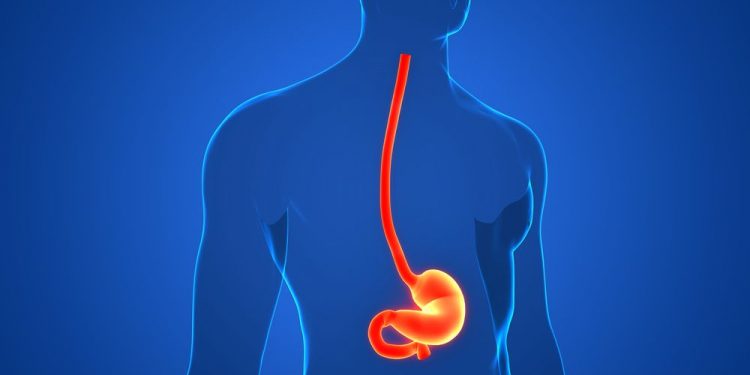An esophageal web is a thin membranous constriction that partially obstructs the lumen of the esophagus. They typically occur in the cervical esophagus and are mostly asymptomatic. They are thought to be caused by iron deficiency, inflammation, or congenital anomalies. They are more common in women than men and may be associated with iron deficiency anemia, gastroesophageal reflux disease (GERD), and inflammatory conditions such as rheumatoid arthritis or benign mucous membrane pemphigoid.
Patients with a symptomatic web are usually diagnosed by barium swallow studies or endoscopy. They often report a history of difficulty with the ingestion of solids but are asymptomatic with liquids and may have a history of excessive food chewing to facilitate swallowing.
They are most commonly found in the anterior wall or circumferentially in the upper cervical esophagus but can occur anywhere in this region including the pharynx. Cervical esophageal webs are often seen in association with GERD and other inflammatory conditions. These webs can also be associated with hereditary disorders such as Plummer-Vinson syndrome.

Rarely, esophageal webs can develop in untreated severe iron deficiency anemia and are more common in women than in those without this condition. These webs appear as a uniform narrowing of the esophagus on barium esophogram or endoscopy and may be ruptured during this test.
These webs are less distensible than the fibromuscular stenosis that is typically dilated with a bougie-type dilator and thus seem to be more likely to cause a perforation of the esophagus. Those with a firm, nondilatable web should be evaluated for a possible underlying malignancy such as esophageal cancer.
Historically, esophageal rings and webs were reported exclusively in women with associated iron deficiency anemia but this is not the case anymore. Brunton and Eban (1) recently described 4 males with a Plummer-Vinson ring in the postcricoid area of the upper esophagus with dysphagia, koilonychia, and iron deficiency anemia. Another complication of iron deficiency anemia is the development of a Schatzki ring, a squamocolumnar ring that develops in the distal esophagus at the site of the squamocolumnar junction where the proximal portion of the esophageal lumen is covered with squamous epithelium and the distal portion with columnar epithelium. Patients with Schatzki rings typically present with a history of burning on swallowing and dysphagia for both solids and liquids.









